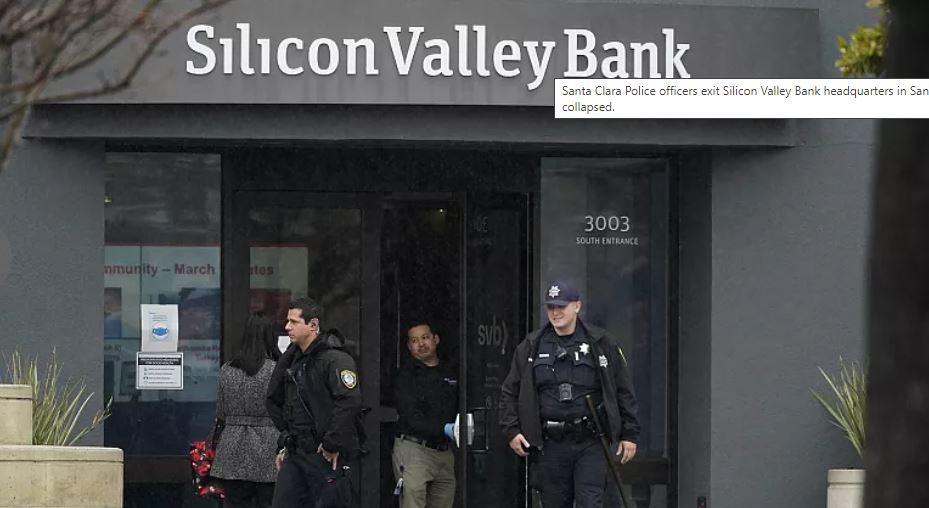PARIS: The collapse of Silicon Valley Bank, the sector’s biggest failure since the 2008 financial crisis, has raised fears of potential spillover across the entire banking system.
But financial analysts say measures taken by US authorities could contain the damage, but the markets are anxious.
– Is this a repeat of 2008 financial crisis? –
The 2008 global financial crisis was precipitated by the collapse of a Wall Street titan, Lehman Brothers.
Eric Dor, economic studies director at the IESEG School of Management in Paris, noted that the current upheaval concerns smaller banks that cater to the tech sector.
“We are not in the same situation, it’s much more limited, with a certain type of bank and clientele from a certain sector,” Dor said.
“Things should calm down with the measures taken in the United States and we are not as concerned in Europe as we don’t have as many tech start-ups as the United States,” he added.
SVB remains “a special case,” said Lionel Melka from the investment group Swann.
The “sudden” collapse caused turmoil but things “will calm down”, he said, adding that the banking crisis was “limited” by the US intervention.
The US Treasury Department, Federal Reserve and Federal Deposit Insurance Corporation (FDIC) announced a series of measures on Sunday to reassure individuals and businesses in the stability of the US banking system and guaranteed all deposits at SVB.
The Fed has agreed to lend the necessary funds to other banks that need to honour the withdrawal requests of their clients.
“Banks are in a much more solid position in terms of funding than they were before the financial crisis,” said Germany’s largest asset management firm DWS.
President Joe Biden sought to ease concerns on Monday, saying “Americans can have confidence that the banking system is safe.”
Wall Street rose but smaller banks struggled, with shares in First Republic Bank tumbling by around 60 percent.
European stock markets were deep in the red.
– Did the Fed’s rate hikes play a role? –
The Fed and other central banks worldwide have been hiking interest rates since last year to contain decades-high inflation.
This helped several lenders post healthy profits for 2022, but the higher rates have also lowered the value of bonds bought by banks when they had lower returns.
SVB collapsed after it took a loss of $1.8 billion in the sale of $21 billion worth in securities.
Investors fear that other banks may face similar situations if they need to raise funds to cover a drop in deposits.
The situation could prompt the Fed to put a brake on its rate-hike campaign at its next policy meeting next week.
“In the wake of the implosion of SVB, traders are dialling down their expectations for Fed hawkishness next week,” said Matthew Weller, head of research at Forex.com and City Index.
– Who will foot the bill? –
The takeover of SVB by US authorities on Friday raised concerns about the fate of clients’ deposits.
On Sunday, the Federal Reserve, Treasury Department and Federal Deposit Insurance Corporation announced that SVB depositors would have access to “all of their money” from Monday, and that American taxpayers will not have to foot the bill.
US authorities also said that depositors at New York-based Signature Bank, which was shuttered on Sunday, would be “made whole”.
But officials warned that investors at the two banks would “lose everything” and senior managers would be sacked.
Neil Shearing, group chief economist for Capital Economics, said there are two things to watch in the coming days and weeks.
“The first is whether the actions of the authorities are successful in maintaining (or restoring) the confidence of depositors and investors in the US banking system,” he said.
“The second issue is whether there are any other institutions with similar vulnerabilities to SVB (or Signature Bank) lurking in the shadows either in the US or in other economies,” he added. RSS

